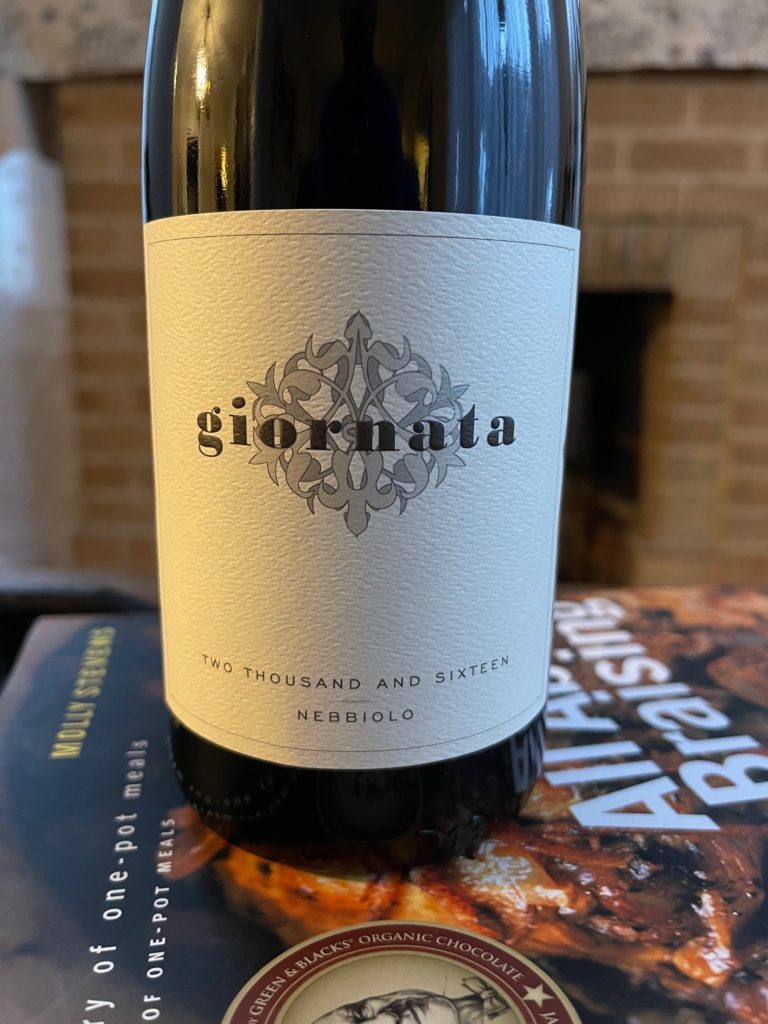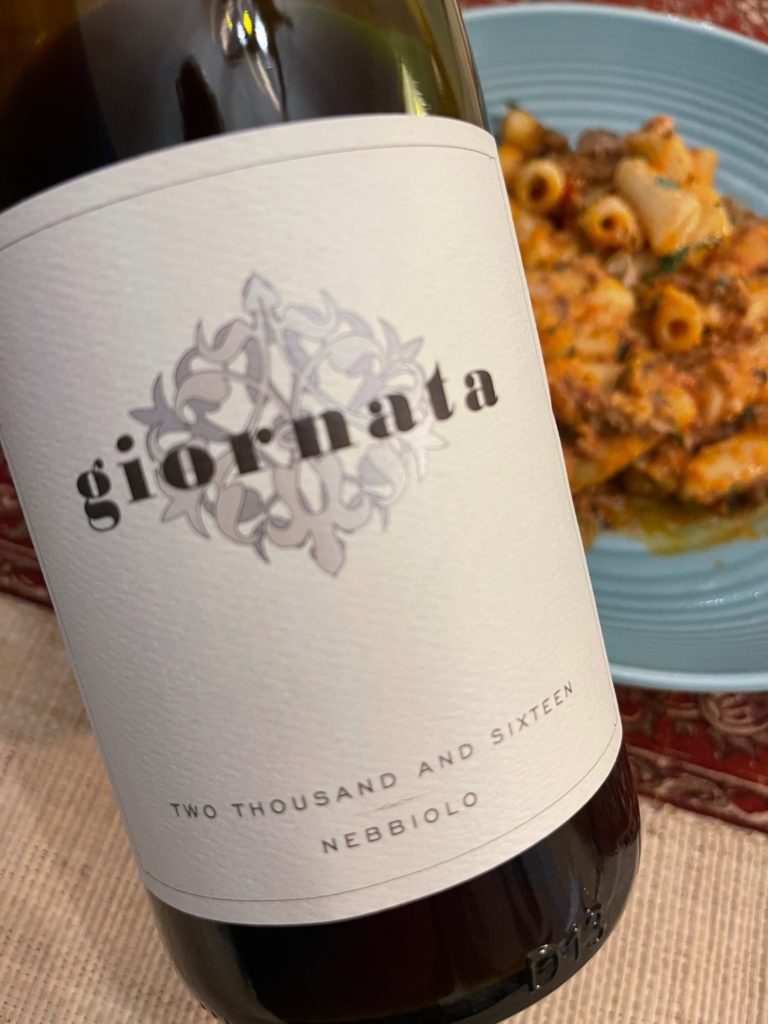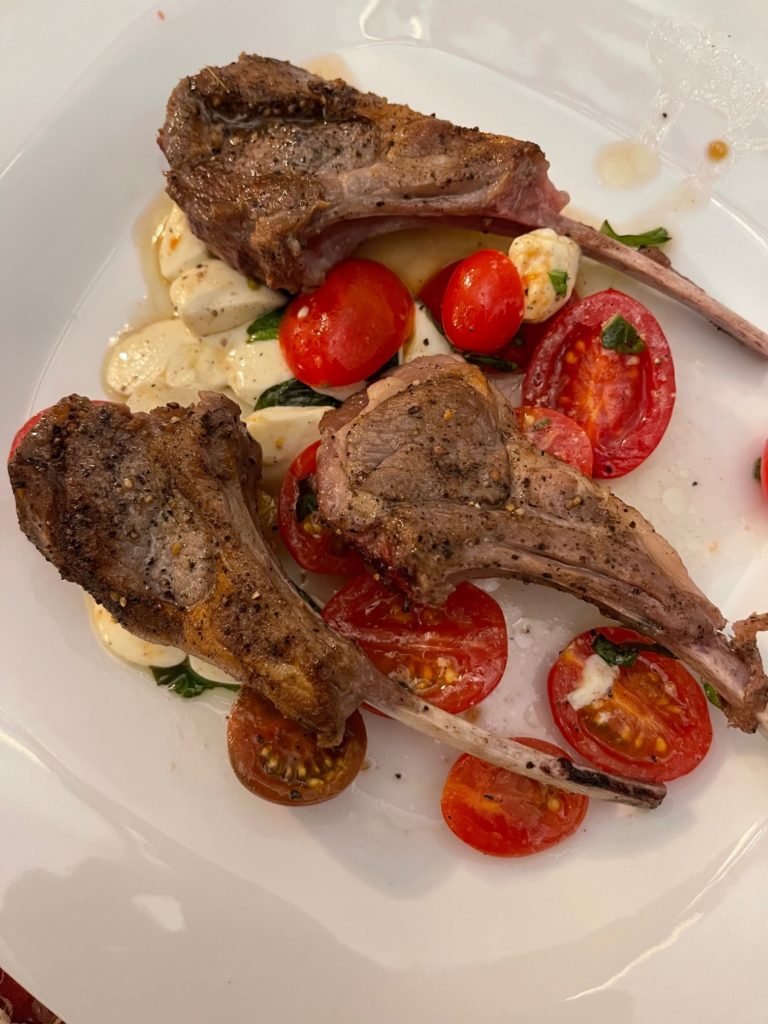“They chose Nebbiolo as their holy grail – usually a foolhardy decision in California, but they perhaps have accomplished making the most successful Nebbiolo yet in the state”
— Jon Bonne, The New California Wine
This month the Italian Food, Wine and Travel group of bloggers are digging into Italian grape varieties grown outside of Italy. I’m contributing a Nebbiolo from California.
Italians and thus Italian wine culture has been an integral part of the California landscape since the 19th century when many Italian immigrant came to California during the Gold Rush. Some of California’s earliest wine-making families were Italian. Do the names Gallo, and Mondavi ring any bells? What at the Italian Swiss Colony – an agricultural colony based in Asti, California that was founded by Italian immigrants in 188I. It later evolved into an American wine company. By the mid-1950s, it had become the second-most-visited destination in California, after Disneyland!

The history of Italian grape varieties planted in California isn’t nearly as illustrious of the forgoing examples. That’s because growing and selling Italian grape varieties is mostly a recipe for financial ruin. Even today only about 2% of California’s wine grapes are planted to indigenous Italian grapes varieties. Barbera, Sangiovese, and Primitivo are the three most planted red wine grapes, while Catarratto (well this is a surprise to me!), Vermentino, Tocai Friulano are the three most planted white wine grapes.
There are only about 140 acres of Nebbiolo planted in California. Nebbiolo is most renown in two of Piemonte’s most famous production regions – Barolo and Barbaresco.


While there are quite a few notable California wineries and winemakers who craft wines from Italian grape varieties, including Massican, Mathiasson, Ryme and Unti, there appear to be only one crafting wines solely from grape varieties indigenous to Italy – Idlewild (although practically speaking Giornata is the other. Their Gemellaia bottling is a Super-Tuscan inspired blend of Sangiovese, Merlot and Petit Verdot).
2016 Giornata Nebbiolo Luna Matta Vineyard
Fruit for this wine is sourced from the the Luna Matta Vineyard, located on the westside of Paso Robles. It has been certified organic through CCOF since 2010. Practices beyond organics include releasing beneficials such as a weevil for star thistle control and lacewings for leafhopper control. Nothing is sprayed on the property that requires “astronaut” apparel to apply. Much of the property is dry farmed. Elevation is about 1750 feet above sea level. Soil is a thin layer of clay loam over calcareous substrate. The vineyard is managed by Giornata co-owner Stephanie Terrizzi

My tasting notes follows:
Translucent ruby color with perfumed red fruit, tobacco, dried rose, camphor a mix of dried savory herb, and a hint of tar aromas. On the palate it’s light-bodied and elegant with vibrant acidity and fine-grained tannins. It shows dried strawberry, raspberry, hibiscus tea, tobacco and spice flavors with a lengthy finish. 100% Nebbiolo raised in French oak (100% neutral); fermented on native yeast. 92pts|14% abv|SRP-$45|120 Cases. A splendid bottle of Nebbiolo that lives up to Bonné’s quote at the top of this article.
This wine was our choice for V-Day. It was fantastic paired with local take-out from Paradiso of Rigatoni Bolognese of Housemade Beef~Italian Sausage~Veal Red Wine Sugo / Reggiano Parmesan / Basil + Three Oven Roasted Lamb Chops / Caprese Garnish!
About Giornata Wines
I was introduced to Giornata Wines when I read Jon Bonné’s The New California Wine (published in 2013).
Giornata is based in Paso Robles. The winery is owned and operated by Brian and Stephanie Terrizzi. The couple met and fell in love while both were studying Enology at Fresno State.
The journey in creating Giornata started with a dream to create wines from Italian grapes grown in California employing the sensibility and philosophy of Italian winemaking. We work with the same grape vines (clonal material) as the best producers in Italy. The Central Coast of California possesses many of the attributes of the top wine growing regions of Italy. Our winemaking style leans more Italian than Californian in that we favor wines with balance and subtlety rather than intensity and extraction. We pick our grapes at lower sugar levels and handle our must gently in the cellar, thus resulting in wines that belong on the Italian dinner table possessing both ample acidity and tannin. Traveling to Italy on a regular basis, we continue to receive feedback on our efforts while researching Italian winemaking and viticultural methods explains the Giornata website.
Giornata was the last winery we visited B.C. (Before Covid) during a trip to Paso with friends for Valentine’s 2020. We love this winery and visit every time we go to Paso Robles!
Check out all of the #ItalianFWT finds by following the links below:
- Camilla at Culinary Adventures with Camilla: Cheesy Bites, a Colorful Board, and a Barbera…from California
- Wendy at A Day in the Life on the Farm: Italian Grapes Grown Outside of Italy and Served Out of a Box? Che Diamine!!!
- Andrea at The Quirky Cork: Tuscany Meets Turkey with Chateau Murou Montepulciano Sangiovese
- Jeff at FoodWineClick!: Italian Grapes from Unti Vineyards at the Winter Grill
- Jennifer at Vino Travels: Remy Wines: Italian Grapes in Oregon and a Winery After my Heart
- Terri at Our Good Life: Italian Grapes in Lodi Paired with Grilled Salmon Tacos
- Nicole at Somm’s Table: 2 Italian White Wine Blends Born in California
- Gwendolyn at Wine Predator: Italy in California: from Aglianico to Zinfandel and Italy in California: Nebbiolo from Humboldt’s Terragena and Santa Barbara’s Silver
- Susannah at Avvinare: Vermentino, A Star In and Out of Italy
- Lynn at Savory the Harvest: Honoring An Italian American: Palmina Wines in Santa Barbara County
- Linda at My Full Wine Glass: Native Italian grapes find a home in the land of Pinot Noir
If you’re reading this early enough, feel to join the group for a live Twitter chat. We’ll be live on Saturday, March 6th at 8am Pacific time. Just follow the hashtag – #ItalianFWT – and be sure to add it to anything you tweet so we can see it. Cin cin!


That wine sounds luscious. I am craving something I haven’t had before.
I’m excited that this winery is in Paso. I am adding it to the list of places to visit when the world opens and I am able to get out to see my brother and his family. Thanks.
You dug up some great history Martin, Italian Swiss Colony- haven’t heard about that in years! Like you, I’m surprised by the Catarratto. Do you know who’s making one? On Giornata, they check the boxes I like, especially balance, subtly and lower sugar levels. Great share.
How fascinating! We’ve only been to Paso once as our return trip was canceled due to Covid. We are definitely aiming to get back soon and when we do, will be adding this winery to the list!
Wonderful winery and wines. I’ve met Brian and profiled his Italian varieties for a couple of articles I have written for Italian magazines. I loved the history you gave in this post of these types of grapes and the Cal-Ital world. Cheers to you Martin. Susannah
Thanks Susannah!